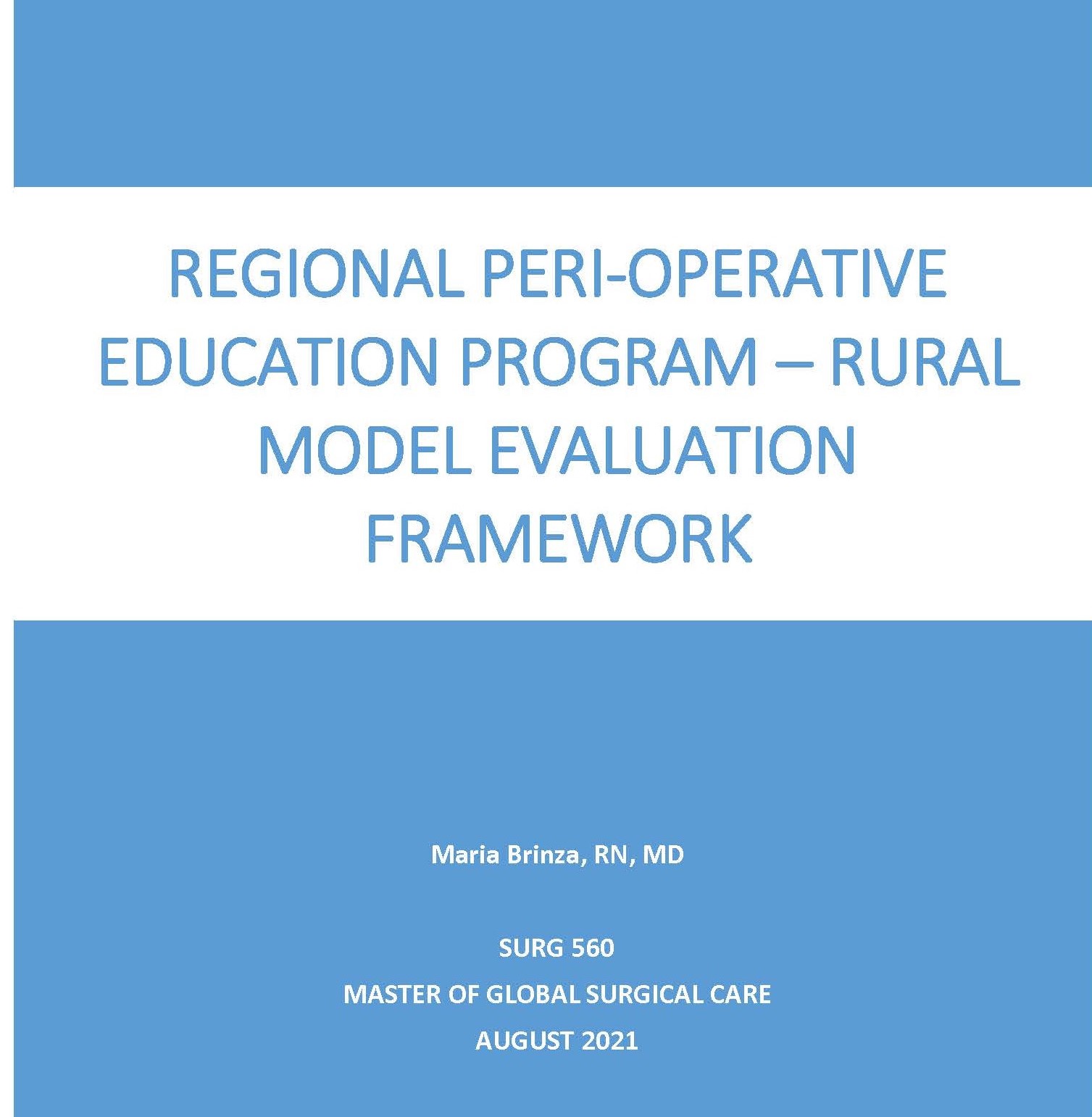Maria Brinza, a student of the MGSC program, recently published their SURG 560 final report to UBC cIRcle. This report is a summary of the final practicum project “Regional Perioperative Education Program: Rural Model Evaluation Framework” conducted January 2021 – Aug 2021.
To read the full text, please visit here.
Background: For the past few decades, nursing shortages have become a major concern and perioperative nursing field is no exception to this situation (Willemsen-McBride, 2010). Ball, Doyle & Oocumma (2015) predicted a significant worldwide perioperative nursing shortage, due to lack of perioperative curricula in the majority of nursing educational programs (Holmes, 2004). This lack of perioperative experience limits nursing students’ exposure to the operating room, and may limit new graduate interest and awareness of the employment opportunity in the operating room (Beitz, 2019). In addition, recruitment and retention in the perioperative specialty area are vulnerable due to the stressful working environment and the required additional education and requisite specific clinical skill set needed to work in the operating room (Vortman, 2019), with consequences such as substantial delay in surgical procedures and reduced quality of patient care (Ball et al., 2015). The challenges described above exacerbate when it comes to training nurses for remote/rural clinical sites, where training capacity, support and resources are limited and where recruitment and retention represent a constant problem (Pitblado et al, 2013; Hunsberger et al, 2009; Montour et al, 2008; Baumann et al, 2006).
Many specialty nursing programs across Canada make efforts to adapt their curriculum and training by engaging stakeholders, bringing together multidisciplinary teams of health care professionals (HCP), policy makers, rural health care organizations, with the aim to find effective solutions to respond to these needs. (Registered Nurses’ Association of Ontario, 2015) Having highly qualified perioperative nurses trained locally, increases the possibility that they will continue to live and work in the rural environment and enables their own integration in the community, with a decrease in attrition rate (Vortman, 2019).
Consequently, to maximize the learning experience, it is important to adopt a flexible education program delivery that includes a large variety of tools and applications: virtual learning, classroom hours, simulation, clinical preceptorship support, with a skill mix tailored for the specific clinical site and in consistent with surgical population requirements.
Study Overview: The program evaluation process of the Vancouver Coastal Health (VCH) Perioperative Education Program for this project was designed to generate formative findings through the evaluation questions. This was intended to further inform recommendations for program improvement, and summative evaluation findings, that generated information related to the quality and effectiveness of the program, demonstrating whether the program worked the way it was intended. It was the most appropriate choice to consider the use of the Kirkpatrick Model (KM) because it provided a valuable avenue for understanding the impact of the rural perioperative program on the student’s ability to be practice/job ready. Using the Kirkpatrick Four-Level Training Evaluation Model, the study team was able to capture qualitative and quantitative data to ensure an accurate process that evaluates the outcomes, the process and the indicators. Furthermore, guided by the interview questions representing all four levels of the model, each successive level of evaluation was intended to answer whether the foundational learning outcomes were met, with a view to building up a picture of the whole-business impact of the rural model.

